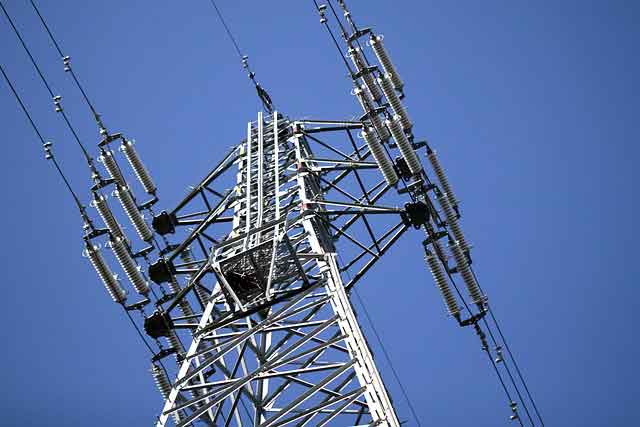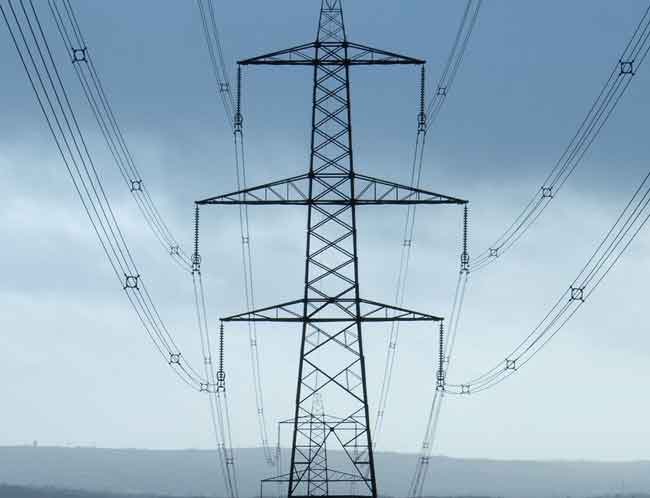San Francisco Vote Could Dump Electric Utility, Put Power in Public's Hands
- Many in the left-leaning city of San Francisco probably shouted "power to the people" at one time in their lives. In November, they may actually get the chance to give power -- electrical power, that is -- to the people.
Two measures on San Francisco's ballot would create public power authorities that would use eminent domain powers to seize Pacific Gas and Electric Co.'s electrical generation and distribution systems in the city.
The election is the culmination of a decades-long struggle to dislodge PG&E from San Francisco by activists who claim that public ownership of electricity services eventually would lead to lower rates, better accountability to customers and greater focus on renewable energy.
"There is a hell of a lot of anger, angst and fatigue with PG&E," said Ross Mirkarimi, campaign director for MUD Now!, the lead group backing the proposals.
"Joan and Joe Q. Citizen who may not be intimately involved in this campaign just know it from a gut level that they are being taken advantage of. And they are being taken advantage of," he added.
But the bankrupt PG&E, despite a less-than-sterling reputation among the general public, is gearing up for what could be a well-financed campaign to defeat the two measures. If that doesn't work, lawsuits seem likely.
"We will protect our assets," said Jennifer Ramp, a spokeswoman for PG&E, which serves 365,000 customers in San Francisco, where it is headquartered, out of 4.6 million statewide. "Our company is very proud of the quality and reliability of the service we've provided."
Measure I, a citizens initiative that was the first to gain a spot on the ballot, would create an independent municipal utility district, governed by state law, that also would encompass the small adjoining city of Brisbane.
Measure F, a charter amendment placed on the ballot by the Board of Supervisors, would transform the San Francisco Public Utilities Commission, which now provides water and sewer services to city users, into a city water and power agency. Both the municipal utility district and the power agency would be led by elected boards.
If both proposals pass, the municipal utility district would have two years to begin taking over the two power generating plants in the city -- one owned by PG&E, the other by Mirant Corp. -- and PG&E's transmission lines. If that failed because of legal or other delays, the city power agency would take over the task.
Mirkarimi contended that while neither rates nor customer service would change overnight, both would improve in no more than five years. According to the state Energy Commission, California's investor-owned utilities, including PG&E, generally charge higher residential rates than those of large customer-owned utilities -- including the Sacramento Municipal Utility District, which proponents regard as a model for San Francisco.
But SMUD is a mature entity that owns several generating plants. San Francisco would have to start almost from scratch and spend billions of dollars in revenue bonds to buy the PG&E and Mirant facilities. The PG&E plant, heavily criticized as a source of pollution, is earmarked to close within a few years.
The city's sole power plant is the Hetch Hetchy hydroelectric project in Yosemite National Park. But most of its electricity is committed to San Francisco city government and customers in Turlock and Modesto -- though public power advocates are trying to abrogate the Central Valley contracts. They also are backing two other ballot measures to finance large-scale solar energy projects around the city.
In concept, public power works because financing costs are lower and there is no need to produce profits, said Ed Smeloff, a former SMUD board president and now assistant general manager for power policy at the San Francisco Public Utilities Commission.
"If you bring in capable management and have well-trained employees, the record of public power utilities is as good or better than investor-owned utilities," Smeloff said. More than 40 customer-owned power agencies operate in the state.
But the way advocates are going about establishing public power in San Francisco is misguided, said Jim Chappell, president of the San Francisco Planning and Urban Research Association, which opposes the measures.
"We are politicizing a very basic city service with no indication that anyone involved knows anything about the very serious business of running a water and power agency and municipal utility district," he said.
Much of the impetus for public power has emanated from the San Francisco Bay Guardian, a weekly newspaper whose publisher, Bruce Brugmann, has long despised PG&E.
Local politics helped too. Since the November 2000 local election, public power advocates have dominated the Board of Supervisors.
And the state's energy woes of the past year, along with PG&E's financial and legal troubles, have only aided the measure's supporters. A Field Poll released last week indicated that only 16 percent of Californians queried thought private utilities were doing a good or very good job in improving the state's energy situation, and 44 percent said they were doing a poor or very poor job.
"The constellations are lined up nicely -- very nicely," said Mirkarimi.
Nonetheless, PG&E had committed $578,000 to fight the measures as of the end of August, and more is expected. MUD Now! reported donations of $50,000. If the measures win, PG&E is expected to sue. It tied up the Sacramento Municipal Utility District in court for 12 years, finally losing in 1946.
Business groups also are working to defeat the measures and Mayor Willie Brown is neutral. But most local politicians are supportive, including state Senate President Pro Tem John Burton. Labor unions are helping too, though the union that represents PG&E's Northern California workers is siding with the company.
No independent polls have been released to date, and so the measures' fate remains cloudy, said Richard DeLeon, a political science professor at San Francisco State University.
Given the complexity of the issues involved, the lack of major power shortages this summer and the diversion of attention onto the Sept. 11 terrorist attacks, many voters may be hard-pressed to fully understand the two measures, he added.
"They're going to be voting in a fog," he said.
Related News

Ford Threatens to Cut U.S. Electricity Exports Amid Trade Tensions
OTTAWA - In a move that underscores the escalating trade tensions between Canada and the United States, Ontario Premier Doug Ford has threatened to halt electricity exports to U.S. states in retaliation for the Trump administration's recent tariffs. This bold stance highlights Ontario's significant role in powering regions across the U.S. and serves as a warning about the potential consequences of trade disputes.
The Leverage of Ontario's Electricity
Ontario's electricity exports are not merely supplementary; they are essential to the energy supply of several U.S. states. The province provides power to approximately 1.5 million homes in states such as New…




